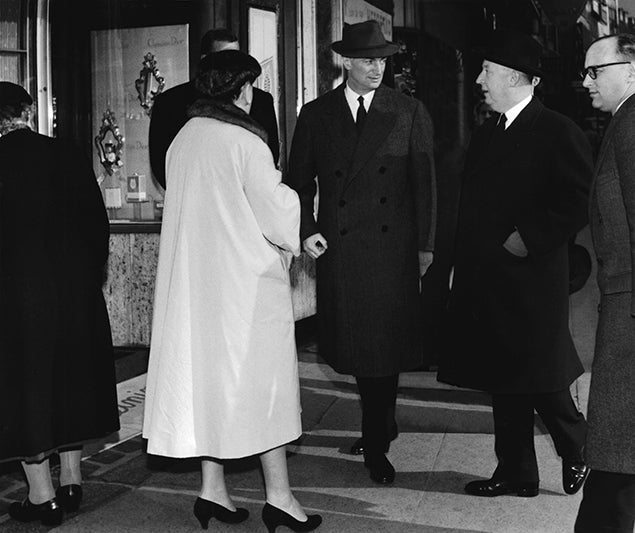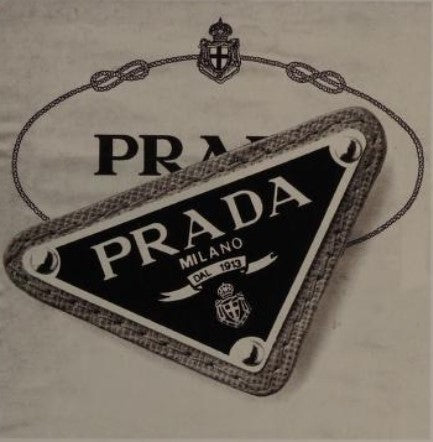
Guccio Gucci: From Humble Origins to Building a Fashion Empire
Guccio Gucci's remarkable journey from a humble hotel porter to founding one of the world's most prestigious luxury fashion empires embodies the quintessential story of vision, craftsmanship, and innovation.
His keen observations of the elite clientele at London's Savoy Hotel sparked a passion that would revolutionize the fashion industry. Guccio Gucci's dedication to craftsmanship was not just a business strategy; it was a reflection of his upbringing and values.
Let us explore together his interesting life story.
Early Life and Inspiration of Guccio Gucci
Guccio Giovanbattista Giacinto Dario Maria Gucci was born on March 26, 1881, in Florence, Italy. He was the son of Gabriello Gucci, a leather craftsman from San Miniato, and Elena Santini, from Lastra a Signa. This Tuscan heritage would later play a significant role in shaping the Gucci brand's identity and craftsmanship.
In 1899, at the age of 18, Guccio Gucci made a decision that would change the course of his life and the history of fashion. He left Florence for London, where he found employment at the prestigious Savoy Hotel.
Working as a lift boy and later as a porter, Gucci was exposed to the world of luxury and refinement that characterized the hotel's elite clientele.
During his time at the Savoy, Gucci developed a keen eye for style and quality, particularly in the luggage and travel accessories carried by the hotel's wealthy guests. He was especially impressed by the elegant luggage produced by H.J. Cave & Sons, a renowned English company.
This experience at the Savoy would later serve as a wellspring of inspiration for Gucci's own designs and business vision.
Return to Florence and Early Business Ventures
After several years in London, Gucci returned to his native Florence with a dream of creating his own line of luxury goods. He initially worked for the Italian luggage brand Franzi, where he honed his skills in leatherworking and gained valuable experience in the luxury goods industry.
In 1921, at the age of 40, Guccio Gucci took a leap of faith and opened his first shop on Via della Vigna Nuova in Florence. The store, initially called "Valigeria Guccio Gucci," specialized in leather goods and luggage, catering to the sophisticated tastes of wealthy travelers and the local aristocracy.
The Birth of an Iconic Brand
Gucci's early products were deeply rooted in Tuscan craftsmanship and the equestrian world. He employed skilled local artisans to create high-quality leather goods, including saddles, riding boots, and other equestrian accessories. This focus on equestrian-inspired designs would become a lasting hallmark of the Gucci brand.
The 1930s marked a period of both challenge and innovation for Gucci. The League of Nations imposed sanctions on Italy under Mussolini's regime, leading to a shortage of imported leather.
This crisis forced Gucci to think creatively about materials. In 1935, he developed a woven hemp fabric from Naples, which became the canvas for Gucci's first iconic print – a series of small, interconnecting diamonds in dark brown on a tan background.
Expansion and Family Involvement
As the business grew, Guccio Gucci involved his sons in the company. Aldo, Vasco, and Rodolfo Gucci joined the family business in 1938, helping to expand it beyond Florence.
That same year, Gucci opened a boutique in Rome on the fashionable Via Condotti, marking the brand's first step towards national expansion.
The involvement of Gucci's sons brought new energy and ideas to the company.
Aldo, in particular, played a crucial role in the brand's international expansion, pushing for the opening of Gucci's first international store in New York City in 1953, just two weeks before Guccio Gucci's death.
Innovation in the Face of Adversity
World War II brought new challenges and opportunities for innovation. In 1947, faced with a continued shortage of materials, Gucci introduced one of its most iconic designs – the Bamboo Bag.
The idea to use lightweight, durable bamboo for bag handles was a stroke of genius, born out of necessity. The unique burnished bamboo handle became an instant success and remains a Gucci signature to this day.
Another iconic Gucci design emerged in the early 1950s – the Horsebit loafer. Introduced in 1953, this shoe featured a metal horse bit across the front, again drawing on the brand's equestrian heritage.
The Gucci Horsebit loafer quickly gained popularity and was even added to the permanent collection at the Metropolitan Museum of Art in New York in 1985.
The Gucci Legacy
Guccio Gucci passed away on January 2, 1953, in Milan, just as his brand was on the cusp of international fame. He left behind a company that had transformed from a small Florentine leather goods shop into a burgeoning luxury brand with stores in Florence, Rome, and Milan.
After Guccio's death, his sons took full control of the company and continued its expansion.
The 1950s and 1960s saw Gucci become a favorite among international celebrities and royalty. Notable clients included Grace Kelly, Jackie Kennedy, and Elizabeth Taylor, whose patronage further elevated the brand's status.
The Gucci Mystique
Guccio Gucci's genius lay not just in his craftsmanship and design skills, but also in his ability to create a mystique around his brand. He understood the power of exclusivity and the allure of luxury.
According to fashion historian Valerie Steele, "Gucci was one of the first to understand that luxury was about more than just quality – it was about desire and dreams."
Gucci also had a talent for storytelling. He often embellished the family's history, claiming connections to Florentine nobility and a tradition of making saddles for Italian royalty.
While these claims were largely unfounded, they added to the brand's allure and helped establish Gucci as a name synonymous with Italian luxury and aristocratic taste.
Design Philosophy and Iconic Elements
Guccio Gucci's design philosophy was rooted in a combination of traditional craftsmanship and innovative thinking. He valued quality materials and expert workmanship but was not afraid to experiment with new ideas and materials when necessary.
Several design elements introduced by Guccio Gucci have become iconic symbols of the brand:
- The GG logo: The interlocking double G logo, representing Guccio Gucci's initials, was introduced in the 1960s and has become one of the most recognizable fashion logos worldwide.
- The green-red-green web stripe: Introduced in the 1950s, this distinctive stripe was inspired by the traditional girth strap of a horse saddle, again referencing the brand's equestrian roots.
- The Flora print: While developed after Guccio's death, the Flora print (created in 1966 for Princess Grace Kelly of Monaco) became another iconic Gucci design element.
The Gucci Empire After Guccio
Following Guccio Gucci's death, the company continued to grow under the leadership of his sons. However, family conflicts and mismanagement in the 1970s and 1980s threatened to destroy the empire Guccio had built.
It wasn't until the 1990s, under the creative direction of Tom Ford and the business leadership of Domenico De Sole, that Gucci regained its status as a leading luxury brand.
Today, Gucci is part of the Kering group and continues to be one of the world's most valuable luxury brands, a testament to the enduring vision of its founder, Guccio Gucci.
Guccio Gucci's journey from a hotel porter to the founder of one of the world's most recognizable luxury brands is a testament to his vision, creativity, and business acumen.
His ability to blend traditional craftsmanship with innovative design, his understanding of luxury and exclusivity, and his talent for creating a compelling brand narrative laid the foundation for Gucci's enduring success.
The legacy of Guccio Gucci lives on not just in the company that bears his name, but in the very fabric of the luxury fashion industry. His life and work serve as an inspiring example of how passion, skill, and vision can create something truly timeless.
Cover Photo Credit: Wikimedia Commons




















